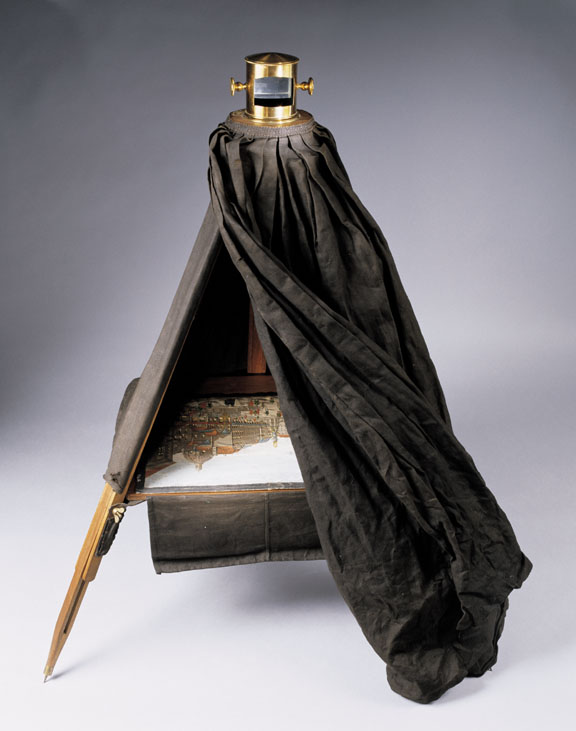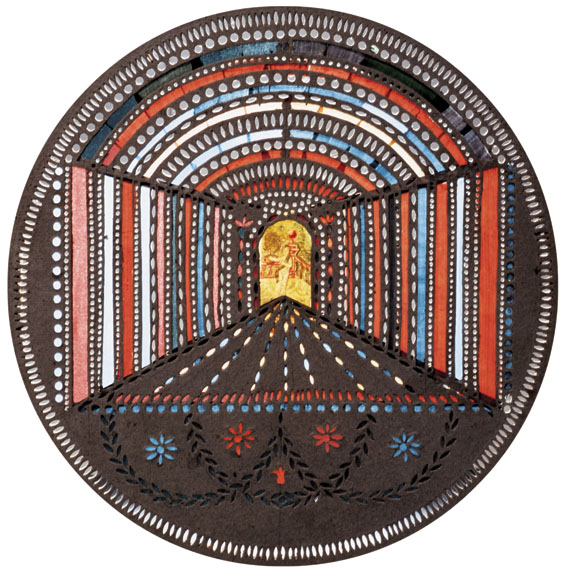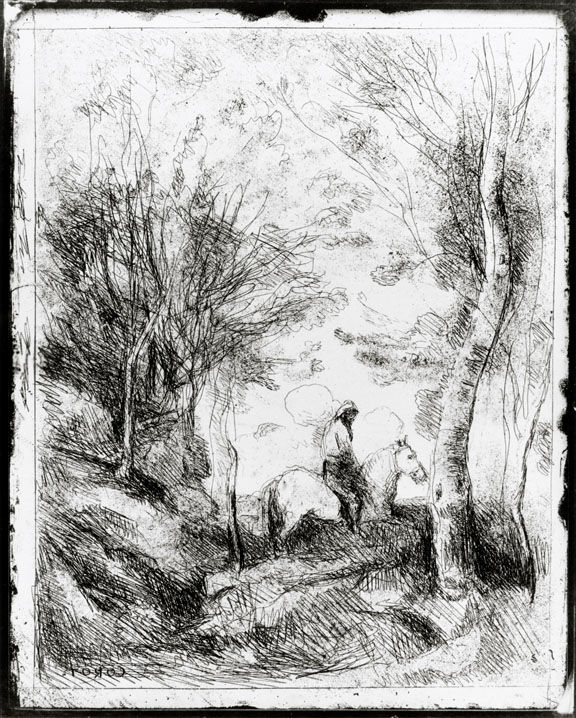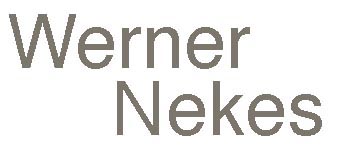Glossary C
A - B - C - D - E - F - G - H - I - J - K - L - M - N - O - P - Q - R - S - T - U - V - W - X - Y - Z
Camera Obscura
[Latin: camera = chamber; obscura = dark]
The ‘dark chamber’ is nowadays regarded as the direct forerunner of the photographic camera.
A small hole in the wall allows daylight to penetrate into a completely darkened chamber. The bundled light casts an image of the outside world – reversed and upside down – onto the opposite wall.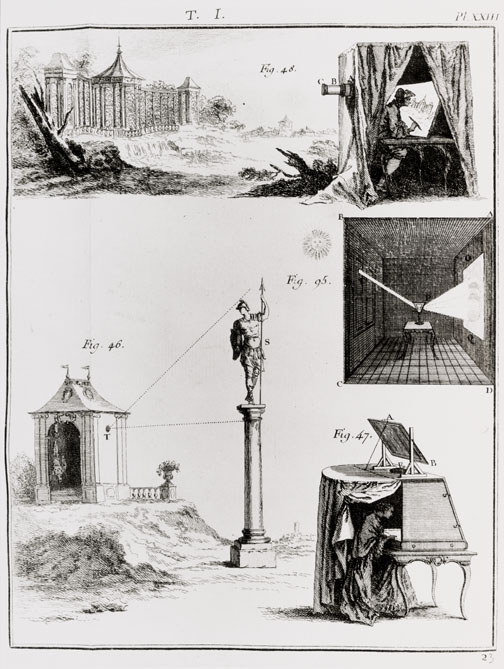
The relevant optical principle was already recognised in the fourth century BC by Mohist mathematicians in China and by Aristotle (384–322 BC). Aristotle observed that during an eclipse the semi-hidden sun, seen through the foliage of a plane tree, was reflected as multiple, reversed images; the principle of the camera obscura is in fact a natural phenomenon. The crown of the tree contained a multitude of dark spaces. Around 1038 the Arabian scholar Ibn al Haitham (965–1040 AD) became the first person to describe accurately the principle of the camera obscura. Leonardo da Vinci (1452–1519) made a comparative study of the functioning of the human eye and of the camera obscura.

Giovanni Battista della Porta (1535–1615), writing in his Magia Naturalis (Natural Magic, 1558), suggested using a camera obscura as an aid to drawing. The Jesuit monk Johannes Zahn (1641–1707) developed various types of portable camera obscura, which – with the addition of a mirror – no longer produced an inverted image.
Chinese Fireworks
Chinese Fireworks are created by inserting a perforated panel into a peep box.
The size, shape, arrangement and placing of the perforations determine the final effect. Behind the panel a clockwork mechanism causes a paper disc, painted with bright spirals and illuminated by candlelight, to rotate. The fragmentation of the colours in the perforations animates the painted panels, creating the impression of fireworks.
Chronophotography
[Greek: chronos = time)
Photographic technique whereby successive stages in a particular movement are captured as one image.
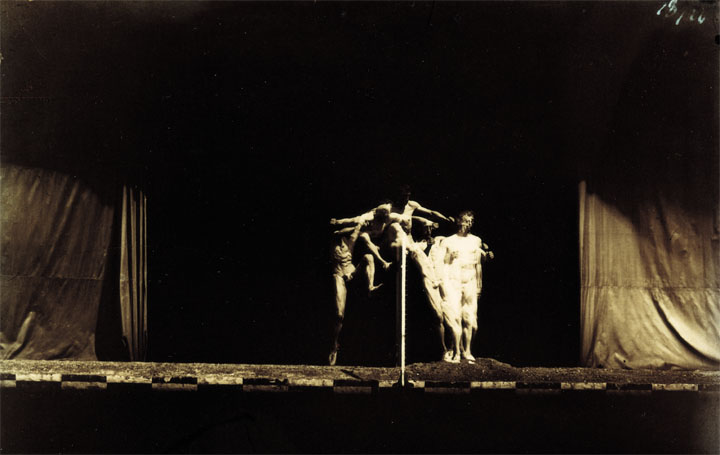
The stages in any movement can be rendered visible either by a series of individual shots or by sequentially-lit simultaneous photographs. Etienne-Jules Marey (1830–1904), Eadweard Muybridge (1830–1904) and Ottomar Anschütz (1846–1907) are regarded as outstanding exponents of this technique.
In Marey's examination of muscle function, the physiologist and physician confronted the problem of how to depict types and sequences of movement. Once he had seen Muybridge’s serial photographs in 1878, he realised that photography, as a mode of observation, could be a crucial tool in his scientific research. In the years to come he developed the photographic rifle, a camera which could take 12 – later 30 – photographs per second.
By this means he was able to create a series of separate images on the same negative and ‘shot’ from the same camera standpoint, the time difference between them determined by a clockwork mechanism and not by the relationship of the movement to the space. Marey relied on the same shutter technique for his 1883 chronophotographs. For these he used a quickly rotating disc with slits as the shutter between the glass negative and the lens. Thus the individual bodily positions could be captured as the different stages in a single movement.
Cliché-verre
[French: cliché = negative; verre = glass]
After a glass plate has been coated with a pale, light-fast layer, it is placed on a dark surface.
A drawing is incised with a fine etching needle into whitish coating, and subsequently handled like a photographic negative to make paper prints. The image resembles an engraving, although with a greater degree of freedom in the lineature. From 1855 onwards, the cliché-verre was found in French artistic circles; initially it was popular amongst members of the Arras Group, later it was taken up by the Barbizon School.
Jean-François Millet (1814–75), Camille Corot (1796–1875), Gustave Courbet (1819–77), Eugène Delacroix (1798–1863) and Charles-François Daubigny (1871–78) were all greatly interested in the cliché-verre and experimented with this technique, using it as a new means of artistic expression.
Coptographs
[Greek: kóptein = to hit, to cut; gráphein = to write, to draw]
Also known as 'megalographs'.
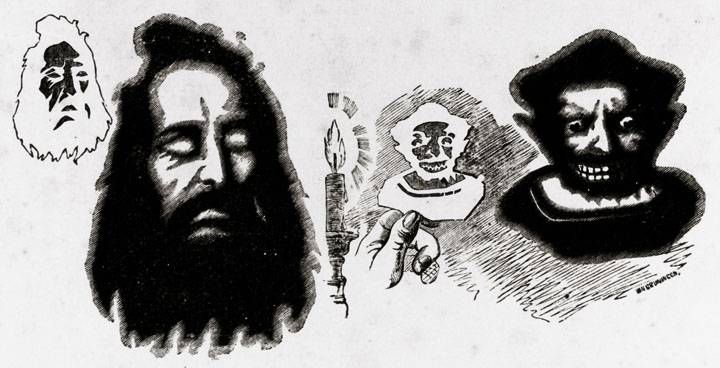
The coptograph derived from the art of silhouette-making, or scissor cuts. It is a smaller, handier version of the older, large phantasmagoria panels. Long before the concept of a negative existed in photography, the coptograph used ‘negative’ cut-out figures; enlarged projections of their shadows generated a positive image.
Much in fashion around 1820, this pastime first gripped Holland and France and then spread through the German-speaking world in the shape of printed sheets for cutting out, intended for ‘coptographic entertainment’.
